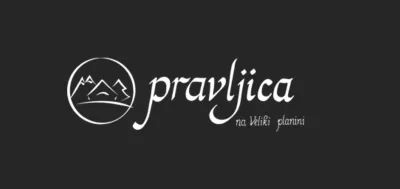General information
RDP Priority
- P6. Social inclusion and local development
RDP Focus Area
- 6A: Diversification & job creation
RDP Measure
- M06: Farm & business development
Beneficiary type
- Small-Micro Enterprise
Summary
Velika Planina is a picturesque mountain plateau with a rich cultural heritage in Slovenia's Kamnik-Savinja Alps. CAP funds were used here to construct a mountain cabin fully aligned with the local vernacular and terrain.
Results
- The mountain cabin attracts tourist income to a rural area and is also a hospitality venue for weddings, team building events, business meetings and culinary workshops in cooperation with local providers.
- The cabin is self-sufficient in water and has its own sewage treatment plant made of sustainable materials.
- The project stimulated economic activity and cooperation with local firms that sell products via the cabin.

Promoter
A fairy tale on Velika planina, Rok Virag sp
Funding
Total budget: 420 864 (EUR)
EAFRD: 106 100 (EUR)
National/Regional: 35 367 (EUR)
Private/own: 279 397 (EUR)
Ressourcen
Documents
Context
Velika Planina hosts and boasts a karstified mountain plateau in the Kamnik-Savinja Alps, Slovenia. The plateau covers an area of 5.8 km2 and has an average elevation of 1 500 m above sea level. Apart from its picturesque landscape surrounded by the Alps, the area is also known for its livestock herding traditions and communities. This niche rural culture is one of the largest of its kind in Europe.
Traditional transhumance farmers continue to graze cattle on rich high-elevation pastures from June to September. The natural beauty of the area and its rural heritage make Velika Planina one of the most popular tourist destinations in Slovenia.
In this context, a company saw an opportunity to enhance the tourist offer by redeveloping a fire-damaged cabin into a luxury multipurpose facility.
Objectives
The aim of this investment project was constructing a luxury mountain cabin to catalyse new rural development possibilities by attracting regular tourist revenue. The company also aimed to use the project to start building a new brand marketed to those seeking healthy, active and different tourism.
Activities
Project activities included:
- The construction of a new building on the site of the damaged cabin was built in accordance with the Institute for Cultural Heritage's vernacular guidelines. This included:
- Conducting the preparatory works (July and August 2020).
- Constructing a cellar (September and October 2020).
- Excavating and constructing a water reservoir (June 2021).
- Installing water treatment (June 2021).
- Constructing a stone compound (July and August 2021).
- Cabin re-construction (June to November 2021)
Main results
- The construction of a new cabin, which is the largest cabin on the Velika Planina, created opportunities for the development of various rural services.
- The cabin cooperates with local shepherds and producers, guides, and other tourism stakeholders to provide authentic experiences and food in the local area. For example, the breakfast offered to guests in the cabin is prepared by a shepherd, a local guide takes the guests on tours of the area and a shepherdess leads cheese-making workshops. The guests also eat dinner at another local provider in their mountain home.
- The facility is self-sufficient in water and has its own sewage treatment plant made of sustainable materials.
- The mountain cabin attracts tourist income to a rural area and is also a hospitality venue for weddings, team building events, business meetings and culinary workshops in cooperation with local providers. The first wedding took place in July 2023, and various team building events, business meetings and culinary workshops have also been held — all delivered in cooperation with local providers.
- Connections with tourist and travel trade organisations support marketing efforts of individual providers. The cabin benefits from cooperation with national and regional tourism organisations, such as Visit Ljubljana (Turizem Ljubljana), which helps the business reach a wide audience via its networks and services.
Key lessons
- This project's business model is reliant on the local community (especially cattle herders) to provide products and services that promote their traditions and their environment.
- Investments in sustainable tourism infrastructure are important because they help preserve cultural heritage in areas experiencing development challenges.
- Quality tourism can help sustain traditional livelihoods and align them with local communities and heritage.
- The construction of the building was supervised by the Institute for Cultural Heritage to ensure that it would harmoniously complement its surroundings.
